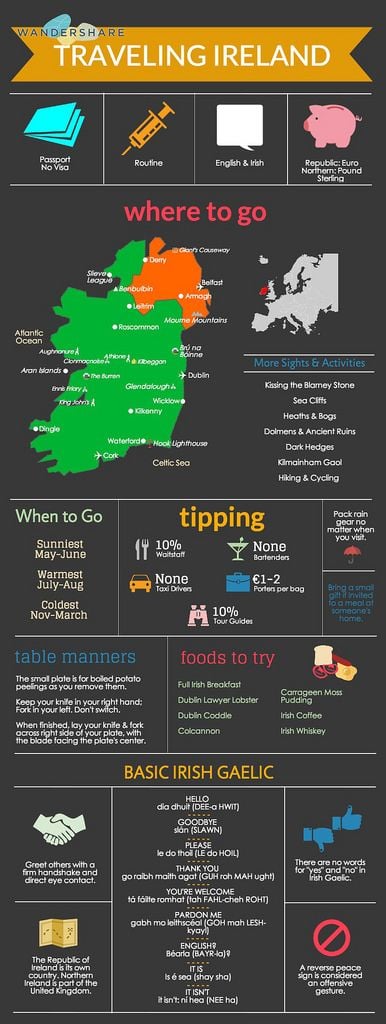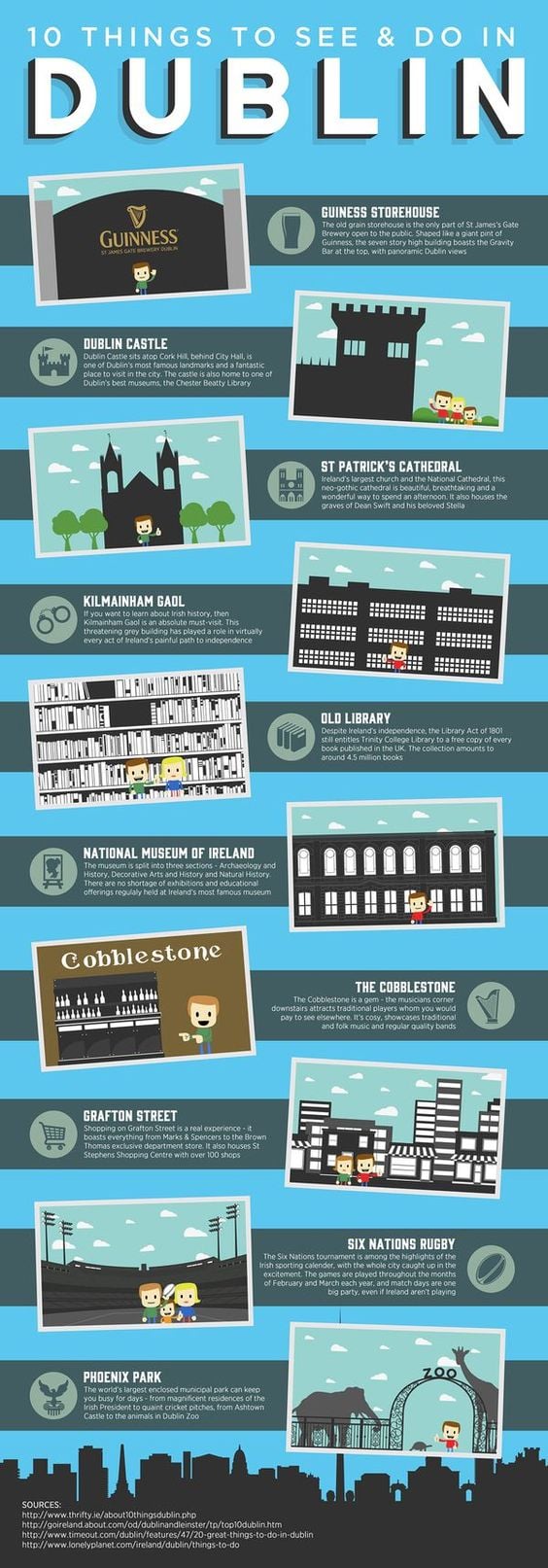STARTBODY
Home > Teach Travel Abroad Tips > Living and Teaching English in Ireland - Habits, Customs & Curiosities
Living and Teaching English in Ireland - Habits, Customs & Curiosities
Ireland’s rugged countryside, dramatic coastline, ancient history, popular culture and fun loving people are just a few of the reasons why people flock to the country in large numbers every year.
For some the visit can become more long-term as there is a good market for English language teachers in some parts of the country.
If you are thinking about heading to the Emerald Isle take a look at this page for a wide range of information on attractions to look out for, facts about the country and a guide to St. Patrick’s Day.
Ireland has long been a popular destination for visitors from all corners of the world thanks to its wide variety of attractions including the famously lush scenery,
Before your visit take a look at this handy guide for a few tips on where and when to go, local foods to try during your stay and a few basic words and phrases in Gaelic for you to practice.
countless historical sites and monuments, outdoor pursuits such as hiking and cycling, and unique experiences like walking on the Giant’s Causeway and kissing the Blarney Stone.
Among the other tips on offer you will find a reminder to bring wet weather gear as the rumors about the Irish weather are generally true.
Although it is relatively small in comparison with many other countries around the world, Ireland is more widely known than most due to its distinctive culture that is regularly portrayed in films and TV shows.
Take a look at this list if you would like to know where the name Dublin came from or how long it takes to pour a perfect pint of Guinness.
However, even if you think you know the country well there are sure to be a few insane facts about Ireland that you are not familiar with.
You can also find out how many people it took to set a new line dancing record and what year the country’s first pub opened its doors.
Dublin is a modern, vibrant city that makes a great destination no matter how long you plan to stay.
There are several other great attractions to look out for including Dublin Castle and Kilmainham Gaol where the city’s turbulent history is brought to life.
Probably the most famous attraction in the city is the Guinness Storehouse where you can find out all about one of Ireland’s most recognizable products and sample some right on the spot where it was made.
For a fascinating insight into everything Irish you should head to the National Museum of Ireland, while shoppers should look out for Grafton Street where you will find over a hundred shops just waiting to be explored.
The Wild Atlantic Way is a popular tourist trail that winds its way round the coastline of Ireland for 1,500 miles, from the Inishowen Peninsula in the north to the Old Head of Kinsale in the south.
This map highlights 15 of the most popular spots on the trail that you won’t want to miss, such as Malin Head which is the most northerly point in Ireland and home to the largest sand dunes in Europe.
Along the way you will find plenty of attractions to enjoy including a wide variety of museums and art galleries, national parks, pristine beaches, and dozens of fascinating buildings and monuments.
Other popular places to explore include the spectacular Cliffs of Moher and the UNESCO World Heritage Site on the island of Skellig Michael.
No trip to Ireland would be complete without a visit to at least one of the country’s 30,000 ancient castles or castle ruins.
Other popular options are Bunratty Castle which is famous for its medieval banquets and Ross Castle where you will find one of the most picturesque settings of any building in the country.
One of the most famous is Blarney Castle where you can kiss the Blarney Stone, which is said to bestow you with eloquence or the ‘gift of the gab’ as the locals might say.
As most visitors to Ireland spend some time in the capital you should not miss Dublin Castle which has a fascinating history that goes back to the 13th century.
This A to Z list takes a light hearted look at all things Irish, from the Aran Islands that gave their name to the famous jumpers to Dublin Zoo which is one of the country’s most popular attractions.
Unfortunately, U for Umbrella is one that many visitors soon become familiar with as the Irish weather is notoriously unpredictable and prone to frequent downpours at any time of the year.
Through the alphabet you will find all manner of Irishness such as C for Craic, a Gaelic Irish word for fun or enjoyment, and G for Guinness, the world famous stout that has been brewed in Dublin for over 250 years.
St.Patrick’s Day is a national holiday in Ireland that is held on March 17th, the traditional date of death attributed to the country’s patron saint.
, or that he actually wore blue vestments and not green as they are often shown today?
Whether you know these facts or not, you are sure to have a great time in Ireland on St.Patrick’s Day.
This list of facts about the day is sure to contain a few that most people don’t know, for example, did you know that St.Patrick was not actually Irish?
Did you know that the first St.Patrick’s Day celebrations took place in America in the mid-18th century, while the first parade in Dublin didn’t take place until 1931?
ENDBODY









